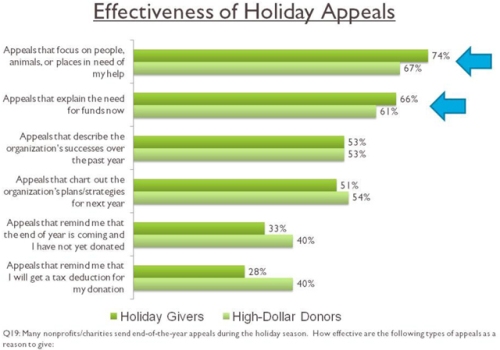
Preselected form fields are like driving your potential donors into a tunnel. Yes, they can turn around and leave the same way they came in, but if they convert, they're likely to convert at the level that you've selected for them.
I learned one of the most interesting factoids on a recent trip with my KMA colleagues to visit a valued partner in Salem Web Network a few weeks ago. It was a simple test that they had run, but the results were pretty staggering.
They wanted to run an A/B split test for a campaign on behalf of one of their faith-based non-profit organizations regarding whether or not Salem Web Network could generate better results by driving email traffic to a donation form with a preselected donation value.
In an attempt to not disclose any sensitive information about their test, their client and/or the exact figures that were generated, I’ve decided to share the figures based solely upon comparison against one another.
The first form (the control for the experiment) drove visitors to a campaign-specific landing page, with strong copy calling for donations for this particular cause. On the form, the Salem Web Network team used a standard array of donation form values that were relevant to the audience type. They did not leverage any preselected donation levels on this version.
The second form (the treated version of the form for this experiment) drove visitors to the same exact form as the control in every way, with the exception of the fact that the Salem Web Network team preselected the 2nd tier donation level.
The email marketing list was segmented at random to allow for the results to be to properly measured against one another. The email messages were exactly the same in every way, with the exception (of course) being the call to action link for the “control” email sending visitors to the form without preselected values, while the “treatment” email drove visitors to the form with the preselected value.
So, here’s the big question: Which form do you think performed better?
Based upon the title of this article, I’m assuming you already know. If you guessed the “treatment” version of the campaign, then you are indeed correct.
The “treatment” form outperformed the “control” in every major measurement statistic used to measure success by the Salem Web Network team.
Below are the staggering results:
- 109.86% increase in overall number of donations
- 111.21% increase in form completion percentage
- 143.22% increase in average gift size
- 157.12% increase in donations collected
The Salem Web Network team, being the good marketers that they are, eliminated the “control” version from the campaign plans and rolled the “treatment” version of the campaign out to the rest of the email file list generating a great ROI for their customer.
So, why is it that the “treatment” version of this campaign performed so much more favorably than that of the “control” version? It has everything to do with the psychological mindset of a donor.
Those that visited the landing page from the email list read and consumed compelling content contained in the email message and clicked through to the landing page for more information as to how they could support this particular client’s very noble cause.
Once on the “treatment” landing page, they were given an array of options to select in terms of a gift size. By controlling the form selection by giving them a level that we’d like for them to donate at (while, of course, allowing the donors to select whatever donation level they could afford, or felt compelled to give towards the cause), the Salem Web Network team effectively was able to lead donors to the water … and the donors drank.
This is an extremely important point to remember as a marketer — campaign targets (in this case, prospective donors) want to be lead in a particular direction. By sticking a landing page inside of your website (and showing your global navigation elements), or designing a form that has too many fields, or any other sort of items that can cause a psychological resistance to performing our call to action, we end up losing the sale.
Our landing pages need to be as streamlined and as simple as possible for our visitors to convert. If we do too much to “muddy the waters” so to speak, we provide our visitors with enough of a reason to leave us, rather than perform our call to action.
I will be implementing these tactics into future strategies for our clients moving forward and look forward to writing future blogs about amazing stories of increased fund raising results in the near future.
I hope you enjoyed these geeky numbers as much as I did.
— GC
More about Salem Web Network:
Salem Web Network is the online division of Salem Communications, which began in 1999 with a single website – OnePlace.com. Today, SWN consists of 12 national sites, including the most well-known brands in the faith marketplace, such as Crosswalk.com and Christianity.com. Additionally, more than 50 radio station websites are part of SWN’s platform, which now reaches more than 7 million users every month.




